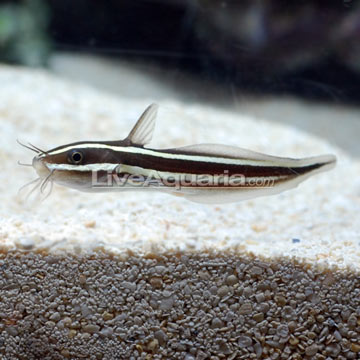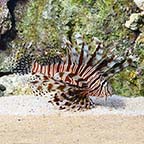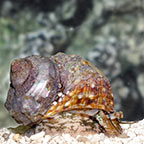
Additional locales and sizes may be available!
Additional locales and sizes may be available! Email me when availableQuick Stats
What do these Quick Stats mean? Click here for more information
What do these Quick Stats mean? Click here for more information
Overview
In the wild, the Coral Catfish is found scavenging in the sand, so the aquarium should have a sandy bottom. It will dig in and out of the sand in search of food, so it is ideal to "sink" meaty foods to the tank bottom. The Coral Catfish is thought to go into freshwater river systems at times as an adult in the wild. It can accommodate salinity variations, but these should be kept to a minimum. The Coral Catfish is sensitive to copper-based medications.
Juvenile coral catfish form amazing and beautiful schools, and do not do well when separated. They may hide themselves and stop eating. Since they must be kept in groups and grow quite large as adults, they must be reserved for the largest home aquaria. As the Coral Cat matures, it begins to lose its schooling behavior.
The Coral Catfish should be kept with caution because its spines are venomous.
Feed a variety of fresh or frozen seafoods and flaked food at least twice per day.
Approximate Purchase Size: Medium: 1" to 1-1/2"; Large: 1-1/2" to 2"











